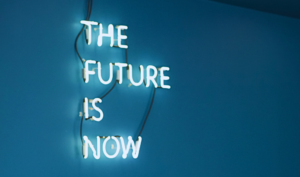
6 Leadership Lessons from EmpowerHR 2025
A CEO’s perspective on building high-performing, future-ready organizations. Sponsored by Betterworks. At our recent event, EmpowerHR 2025, I had the privilege of being surrounded by

A CEO’s perspective on building high-performing, future-ready organizations. Sponsored by Betterworks. At our recent event, EmpowerHR 2025, I had the privilege of being surrounded by

Sponsored by Betterworks. The role of HR is changing faster than ever. As someone who’s spent over two decades in this field, I can confidently

A lack of workforce change readiness and can negatively impact employees and their organizations. The pace and intensity of change is only growing, and the

Sponsored by ExecOnline In today’s fast-paced business landscape, companies are contending with frequent organizational shakeups brought on by ever-changing economic conditions, market shifts, and the

Many of today’s most famous and esteemed business leaders have stories about how they took a shot at their dream – each one of them

As we navigate the changing landscape of today’s modern workplace, two trends stand out as critical for the future of human resources. The shift towards

In the ever-evolving job market, hiring managers and recruiters are on the lookout for standout skills that set candidates apart. From highlighting proactivity and agility

Recently, I coached a professional juggling multiple responsibilities: pursuing a PhD, working full-time, being a dedicated sports parent, and seeking their next career opportunity. They

What an exhilarating experience! I just wrapped up a panel discussion at the Achievers Recognition Next 2024 one-day deep-dive forum in Toronto. Immersive events can

The State of Women in Leadership: Room for Improvement We often hear about the business benefits of women in leadership roles. That isn’t just wishful

Organizations are always changing. This has been especially important since the pandemic arrived in 2020. At first, HR and business leaders were flying blind, reacting

Most of us assume that modern organizations are thriving, with digital technology connecting everyone and driving new levels of workforce productivity. It’s easy to believe,

These days, artificial intelligence is everywhere we turn. But it’s no longer just a cool buzzword. It’s real. For proof, look at recent posts on

As artificial intelligence continues to spread across the business landscape, it is transforming work in countless ways. For example, thanks to AI, we’re entering a

We’ve all seen the headlines. Dystopian predictions about the long-term economic impact of artificial intelligence (AI) continue to dominate the news. But what do people

Workplace evolution is natural. In its time, the digital workplace of the late 20th century was revolutionary. But that era has come and gone. And

Among the many trends that are rapidly redefining work, perhaps the most consequential for HR is the arrival of artificial intelligence (AI). But this points

Artificial intelligence. Automation. Digital transformation. Technology is rapidly redefining business processes in every industry. But that doesn’t mean the human side work is vanishing. Rather,

We publish a lot of articles at TalentCulture by terrific HR practitioners, innovators, and thought leaders. In fact, we’ve been sharing useful ideas from diverse

It’s a universal leadership challenge. In this new work-from-wherever world, how can we get the most from hybrid and remote teams? Will we find answers

The pandemic was a powerful force that profoundly changed the nature of work. When lockdowns eventually lifted and organizations welcomed people back to the office,

The push/pull challenge of change management is never easy to embrace. After all, resisting disruption is human nature. But the process of unlearning and relearning

Artificial intelligence. Some leaders love it. Some have accepted it. Others still have serious questions about it. But whatever your opinion may be, there is

Corporate learning and development (L&D) is at a crossroads. Today’s workforce desperately needs a skills update to prepare for the future of work, and old-school

In recent years, we’ve seen an explosion in new and improved digital tools for HR and work activities. But with the landscape changing so rapidly,